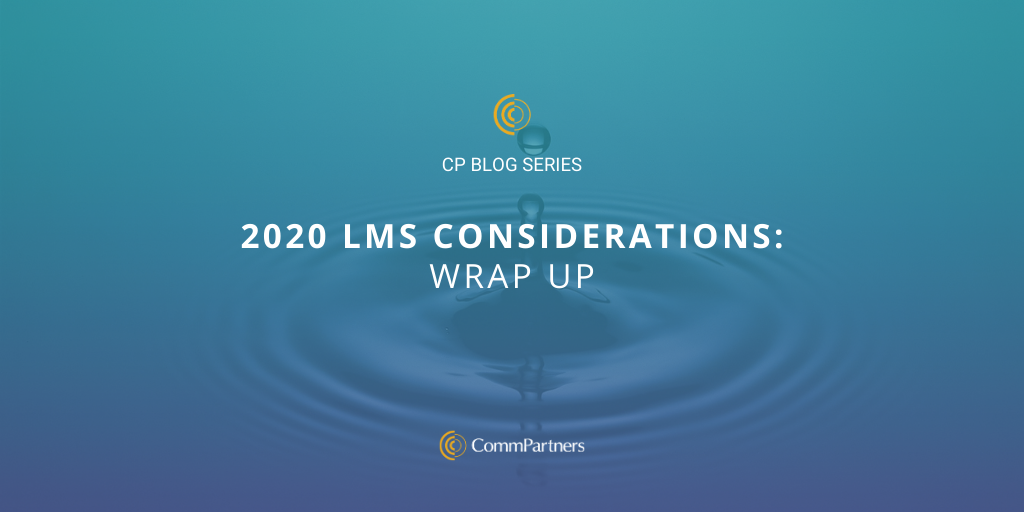
by Julie Ratcliffe | Dec 29, 2020 | Blog
This year we took a deeper look at several considerations that providers should apply to their LMS to support their learning community while increasing impact and reach in 2020. These ideas will help LMS providers think critically about their LMS, how it meets their goals and evolve with the program, and ensures it’s an added value to their education program while making a larger long-term educational investment.
If you missed the series, take a look at some of the topics we covered based on CommPartners’ CEO Rich Finstein’s, The Evolution of the Association LMS: 10 Considerations for 2020:
Community + Learning: In 2020, the world turned almost entirely virtual, bringing community and LMS together to learn and share ideas, creating a huge engagement opportunity. Organizations can create an environment where peer-to-peer learning is just as important as learning from subject-matter experts by providing tools to simulate the value of in-person learning. Learn about those tools here.
Platform Organization and Taxonomy: Creating a system of organization and taxonomy is the center of any robust LMS. It allows your users to navigate your LMS easily and find relevant content quickly, increasing retention to your knowledge center. Whether you’re assessing your current system or implementing a new LMS, we have tips for organizing your content effectively here.
Certification and Digital Credentialing: Certification and digital credentialing refers to using digital badges and online certificates to verify the attainment of knowledge and skills. In this blog, we discuss how to apply them to your LMS and how they function within your education program. Learn more here.
Personalization: Creating personalized learning experiences is extremely important for your learners. There are many ways to create these experiences, but one way to implement this idea is through personalized learning journeys. Personalized learning journeys are about narrowing in on a specific topic, identifying skill gaps, and/or creating a meaningful journey to achieving learning goals. Check out the blog to learn more.
Don’t worry; CommPartners will have a new set of considerations for 2021 coming in the New Year to continue growing and supporting your LMS.
To learn more about our LMS, Elevate, please contact Meghan Gowen at mgowen@commpartners.com.
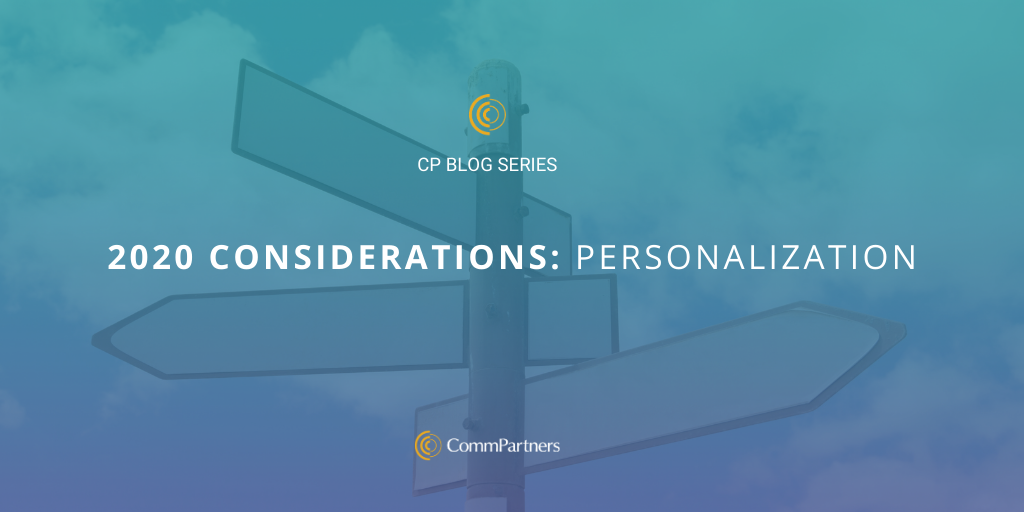
by Julie Ratcliffe | Nov 30, 2020 | Blog
As we continue to dive into CommPartners, CEO Rich Finstein’s The Evolution of the Association LMS: 10 Considerations for 2020, we learn that personalization means identifying, tracking, and educating your learners in a personal and individualized way. A great way to do that is to design personalized learning paths. These journeys or paths can set your LMS apart from the myriad of eLearning options presented to learners today. Your learners benefit from all the advantages of being a part of an association plus have access to a robust LMS with curated content.
The best way to begin designing personal paths based on competencies is to lay the essential foundations. Throughout this series, we’ve proposed three considerations for enhancing your LMS to enrich your learners’ experience. While it takes time to plan and apply these ideas, we want to show you what can happen when you combine Community + Organization + Credentialing to create personalized learning journeys.
Follow these steps to create personalized learning paths:
Step 1
Start by organizing all your content using LMS taxonomy strategies – that will help you later!
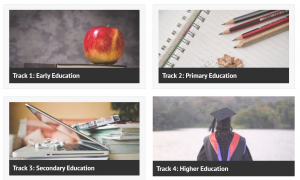 Your content can then be separated into categories or learning tracks. Those tracks can be organized based on member role, publish date, expertise level, job title – whatever makes sense for your organization.
Your content can then be separated into categories or learning tracks. Those tracks can be organized based on member role, publish date, expertise level, job title – whatever makes sense for your organization.
The learner can either begin their journey right there and take classes within the track that most closely applies to them or follow the next steps for an even more curated learning journey.
Step 2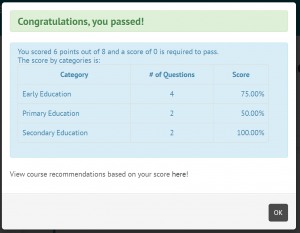
Next, using a competency assessment, like CommPartners’ Self-Assessment Quiz, assess your learners’ strengths and weaknesses. Because you’ve applied a robust taxonomy strategy to your content, your learners can take the quiz and have custom content recommended to them based on identified skill gaps.
Step 3
Now your learners can dig into their learning journey.
As they move along through courses, reward your learners with digital badges when they complete courses or obtain a skill. A digital badge is a portable digital icon embedded with data that verifies a learner’s skills, credentials, and continuing education experiences. Badges are a tangible token they can share with their community to confirm the skills they’ve obtained.
You should also include engagement points throughout your learner’s journey. You can add personalized discussion posts on webinars to facilitate community and informal learning 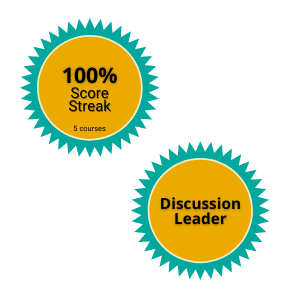 between peers. Look into whether your LMS allows your learners to create profiles, like Elevate’s Connect Module. Creating a unique profile with direct and group messaging allows for personal engagement between users.
between peers. Look into whether your LMS allows your learners to create profiles, like Elevate’s Connect Module. Creating a unique profile with direct and group messaging allows for personal engagement between users.
Step 4
Once a track is complete, use your LMS testing capabilities to ensure they have met the standard for completion and award a certificate. The certificate symbolizes mastery in the subject.
At this point, the learner can take another self-assessment quiz for a new learning track and begin a new learning journey if they desire.
If you’re still unsure how to create a personal learning journey for your learners, check our on-demand webinar: Creating Personalized Learning Journeys. It comes with a toolkit that breaks this idea down even further.
If you’re interested in exploring your Elevate LMS capabilities or any of the tools presented in this blog, reach out to your Elevate representative or contact Meghan Gowen at mgowen@commpartners.com.
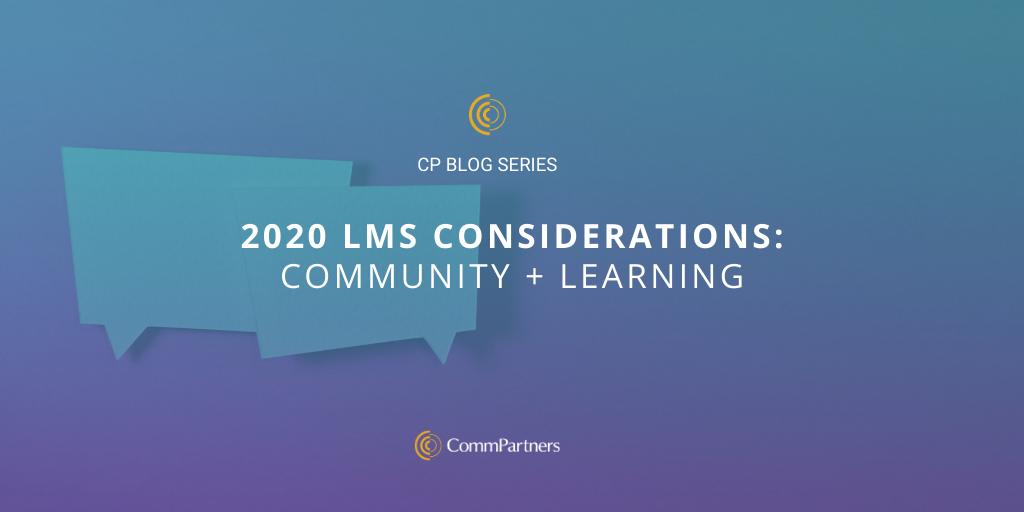
by Julie Ratcliffe | Aug 31, 2020 | Blog
For this month’s dive into The Evolution of the Association LMS: 10 Considerations for 2020, we are looking at Community and Learning, the idea of integrating community into your content and your LMS.
We now live in a world that has gone almost entirely virtual, and if you are not using your LMS to bring your community together to learn and share ideas, you’re missing out on a huge engagement opportunity. According to a Finn Partners report, Engaging Members From a Distance, of the 15 associations observed, all of them included some online learning into their outreach methods during the pandemic.
Learning doesn’t stop when the instructor stops teaching; organizations can create an environment where peer-to-peer learning is just as important as learning from subject-matter experts by providing tools to simulate the value in-person learning.
When learners engage in community-based learning, they participate in a multi-dimensional educational experience based on self and peer experiences, rather than being told information from a single perspective in a flat environment.
So how do you incorporate Community and Learning into your LMS?
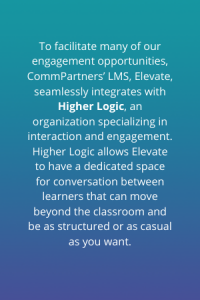
Community and Learning is all about active participation and bringing together diverse communities:
- Make learning active, not passive. In the virtual classroom, establish defined roles with clear expectations of participation.
- Create a space for dialogue. Community members can continue sharing ideas and best practices long after initial learning ends with specific discussion boards dedicated to specific topics.
- Get the conversation going. Post thought-provoking questions with a discussion board attached to your webinar and get buy-in before the presentation begins.
- Share resources. Share resources from your LMS’ learning catalog with membership while encouraging members to share helpful and relevant resources.
- Live participation. With CommPartners’ Elevate, you can integrate with your preferred webinar services like Zoom or GoToMeeting and facilitate participation during live events.
- Create unique profiles. Allow your learners to create unique profiles within your LMS so that interaction can be personal.
- Motivate with badges. Use badges and credentialing to encourage members to participate and post on discussion boards more frequently.
Community and Learning has the best results when there are several ways to engage, and those options are easy to use. Keep UX, or user experience, in mind and ensure your learners know how to access and use the tools you’re providing them.
Looking for more ideas on how to combine Community and Learning? Watch our latest webinar Social Learning in a Virtual World: Tips for Higher LMS and Community Engagement. Watch it and other on-demand webinars here.
Keep an eye out for next month’s deep-dive into Rich’s The Evolution of the Association LMS: 10 Considerations for 2020.
If you’re interested in learning more about Elevate or integrating community into your LMS, contact Meghan Gowen at mgowen@commpartners.com.
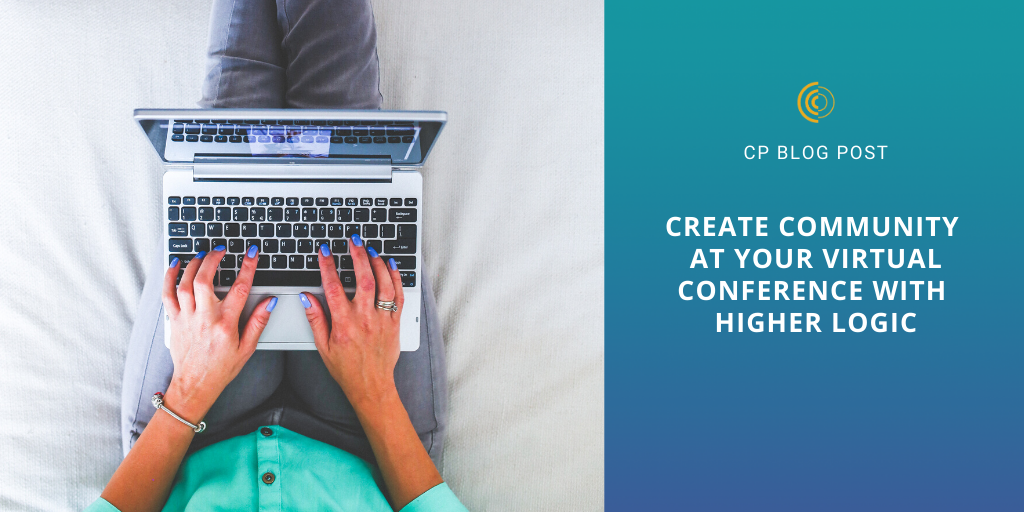
by Julie Ratcliffe | May 27, 2020 | Blog
Learning at conferences can happen in two ways: peer-to-peer and from subject matter experts. Often, what initially attracts us to a conference are the impressive keynote speakers or interesting sessions that contribute to our professional development. Subject matter experts facilitate that kind of learning.
We are also drawn to the social aspects of a conference. The opportunity to network and discuss your field with peers is incredibly valuable. This is peer-to-peer learning. However, something we often hear about at CommPartners is the fear that virtual learners will miss out on peer-to-peer learning, the learning that happens in the hallways, at networking events, or during the meal breaks. While nothing can make up for a face-to-face conversation, it is possible to create a community within your online learning environment.
CommPartners’ LMS, or Learning Management System, Elevate, seamlessly integrates with Higher Logic, an organization specializing in interaction and engagement. Higher Logic allows your Virtual Conference to have a dedicated space for free-flowing conversation between learners that can move beyond the classroom and be as structured or as casual as you want. Here are some ways to facilitate peer-to-peer learning using Higher Logic’s community learning tools:
Session Discussions
- Include a discussion board in each session, adding a new dimension to the speaker’s presentation. This will facilitate a conversation that is specific to that session’s content and won’t get lost in other conversations.
- Speakers can pose thought-provoking questions before a session to get learners thinking before the session begins or will engage learners before the session for more buy-in during the presentation.
Integrating With Your LMS
- LMS’ that have paired community with learning have a more sustainable education system. Education and conversation become cyclical as topics are presented and discussed and then evolve into new ideas for future sessions.
- Include a Higher Logic badge as part of your conference to certify attendees as community builders.
Networking Opportunities
- Include discussion boards on multiple areas of your site to facilitate networking and socializing that extend beyond the classroom. Learners can discuss advances they see their field, new technologies or topics, make connections with peers, etc.
- Open up the discussion; this is an opportunity to ask your members for feedback about your organization or the conference or get them talking about the conference with other members.
Integrating Higher Logic discussion tools creates a dynamic community of conversation and knowledge among your learners. It provides the peer-to-peer learning that many conference attendees search for at a virtual event.
To hear more about Higher Logic and how to make your Virtual Event engaging, join Higher Logic’s Heather McNair for Make Your Virtual Event More Interesting Than What’s Inside the Refrigerator, a free webinar on May 28 at 1 p.m EST. Register here.
Click here for more information
For more information about peer-to-peer learning and how to integrate Higher Logic’s community learning tools, contact marketing@commpartners.com
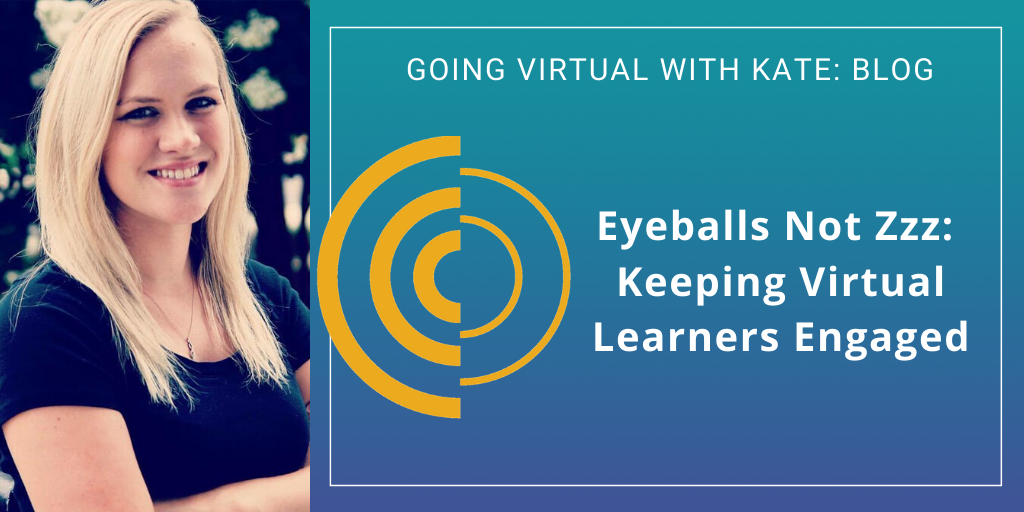
by Julie Ratcliffe | May 14, 2020 | Blog, FaceBook Live
Keeping your learners attention during a Virtual Conference or a Webinar can be a challenge. You had an awesome, 3-day conference planned with all these great activities to make your event interactive, but now you’re forced to go virtual. Attendees who were once going to be bright, shining faces right in front of you, are now faceless figures behind a screen. Are they paying attention to the presenters, or are they scrolling through Instagram? Or are they taking a Buzzfeed quiz to find out which Mamma Mia song fits their personality?
Tracy King, CEO and Chief Learning Strategist of InspirEd, has tips to ensure you’re getting eyes and ears during your virtual eLearning event and not daydreamers.
Session Lengths and Breaks
Even if your learners typically work from home, a Virtual Conference can be a very different learning experience, “consuming content through a screen is fatiguing, and it’s a space we are not used to attending and focusing [on],” says Tracy. Design your sessions with your learners in mind, so your event doesn’t feel like an endurance marathon. When determining session length, consider learning outcomes and the medium, but generally, Virtual Conference sessions should be short about 30-45 minutes. If you plan to go longer, make sure you include interaction (more on that later) and breaks.
Breaks are essential. Presenters and learners need time to stretch, check email, grab a snack/drink, and the ever-necessary bio break. They won’t want to miss a single second of the stellar programming you lined up. To make sure you are giving your learners enough breaks, follow Tracy’s lead:
- 90 minute session = 5 minute break
- Half-day sessions = 15 minute breaks every 90 minutes
Let your learners know when to expect breaks and when exactly they start and stop. Stick to those times. Do not let stragglers derail your conference agenda. If the break is 10 minutes, begin promptly after those 10 minutes are up.
If you’re still unsure of how to design your session, Tracy suggests following the 10×10 Rule: 10 minutes of content and 10 minutes of interaction. The idea is not to be regimented and constantly alternating but for equal parts presentation to equal parts interaction. Speaking of interaction…
Make it Interactive
Don’t shy away from interactivity just because your conference is virtual. Depending on the platform you chose to use for your conference, there may be a host of tools for you to make session hands-on. CommPartners integrates with Zoom, which features tools like a chatbox, whiteboard, Q&A, and polling. These tools can be used as ice breakers, but they should be used to advance learning as well, says Tracy:
- Use the whiteboard in small groups for collaborative projects.
- Poll learners to gauge opinions.
- Facilitate discussion and reflection in the chatbox.
Within CommPartners’ Elevate LMS, or Learning Management System, there are opportunities to make the website interactive for learners:
- Include discussion boards to facilitate conversation, include industry experts as discussion moderators.
- Embed a welcome video introducing your learners to the conference. Make it interactive by giving them a fun task to complete, like asking them to comment where they are joining from on the discussion board.
- If your conference has an Exhibit Hall, utilize chat features so exhibitors and attendees can converse at a booth.
- Create a site scavenger hunt to encourage your learners to explore the whole website, directing them to important features. The winners can receive a prize!
Put the Net in Networking
One aspect of conferences that attendees look forward to the most is the opportunity to network and socialize with other industry professionals. Just because your conference has switched to a virtual platform doesn’t mean the opportunity has to go away. Take advantage of the popular Virtual Happy Hours. Try focusing each Happy Hour around a specific topic, profession, or a previous session so they don’t become overwhelming with too many participants.
Another way to keep the conversation going is to add specific discussion boards or chat rooms to your website specifically dedicated to networking and socializing. Direct your learners to those areas of your website during downtime in the schedule or after learning has taken place. Learners are welcome to take their conversations offline, away from the conference as well.
Going virtual doesn’t mean you need to throw everything you have planned out the window. It is an opportunity to get creative with the tools and the platform you’ve selected. Your learners registered for your conference, ready to consume your quality content, which has not changed. Following these tips will make your learners comfortable, keeping them engaged for the length of the conference.
Click here for more information
For more information about how to engage your learners, contact marketing@commpartners.com. Learn more about education strategy and learning design as well as find Tracy King at inspired-ed.com.



 Your content can then be separated into categories or learning tracks. Those tracks can be organized based on member role, publish date, expertise level, job title – whatever makes sense for your organization.
Your content can then be separated into categories or learning tracks. Those tracks can be organized based on member role, publish date, expertise level, job title – whatever makes sense for your organization.
 between peers. Look into whether your LMS allows your learners to create profiles, like Elevate’s Connect Module. Creating a unique profile with direct and group messaging allows for personal engagement between users.
between peers. Look into whether your LMS allows your learners to create profiles, like Elevate’s Connect Module. Creating a unique profile with direct and group messaging allows for personal engagement between users.



